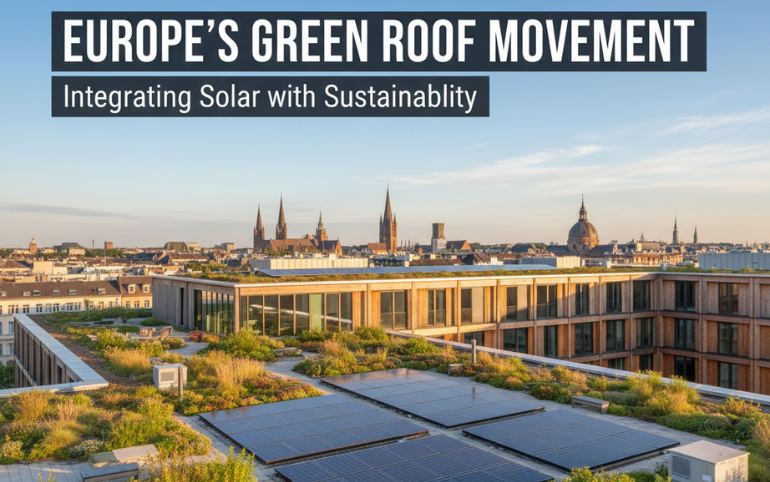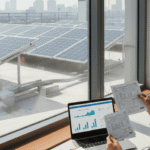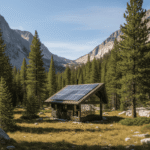Europe is at the forefront of transforming urban and suburban landscapes into energy-producing assets. By weaving photovoltaic (PV) technologies into rooftops, bike paths, and building systems, European innovators are not only bolstering renewable generation but also enhancing resilience, comfort, and community value. This deep dive examines three pioneering initiatives—Germany’s feed-in tariff program, the Netherlands’ Solar Streets pilot, and Nordic integrations of cold-climate PV with heat pumps—to inspire homeowners, policymakers, and urban planners worldwide.
1. Germany’s Feed-in Tariff Success Story
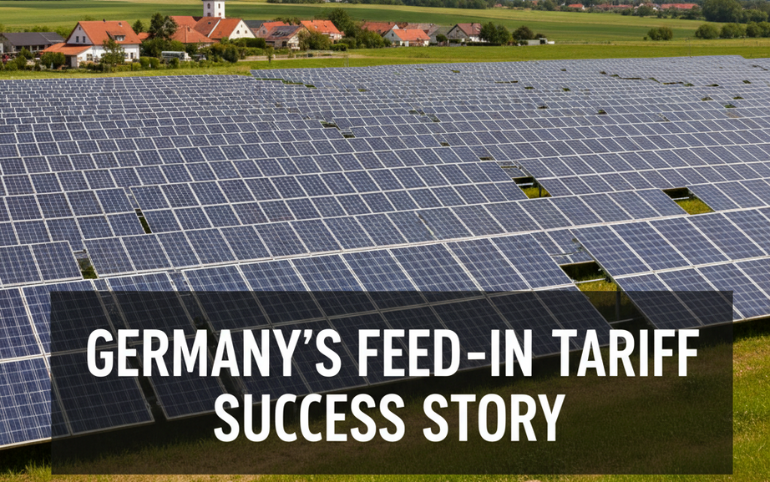
Germany’s Renewable Energy Sources Act (EEG) revolutionized small-scale solar by guaranteeing long-term payments for electricity fed into the grid. Key highlights:
- Attractive Tariffs: Residential rooftop systems up to 30 kWp receive €0.07–€0.09/kWh for 20 years.
- VAT Exemption: Since 2023, systems ≤ 30 kWp are exempt from 19% VAT, cutting a typical 5 kWp system’s cost by nearly €1,000.
- Rapid Growth: Q1 2025 saw an addition of 3.2 GW of rooftop solar, driven by FiT incentives.
- Payback Period: Homeowners recoup investments in 8–10 years, then enjoy decades of energy savings and income.
By stabilizing revenue streams and reducing upfront barriers, Germany’s FiT framework catalyzed widespread adoption, domestic industry maturation, and consistent cost declines.
2. The Dutch “Solar Streets” Pilot
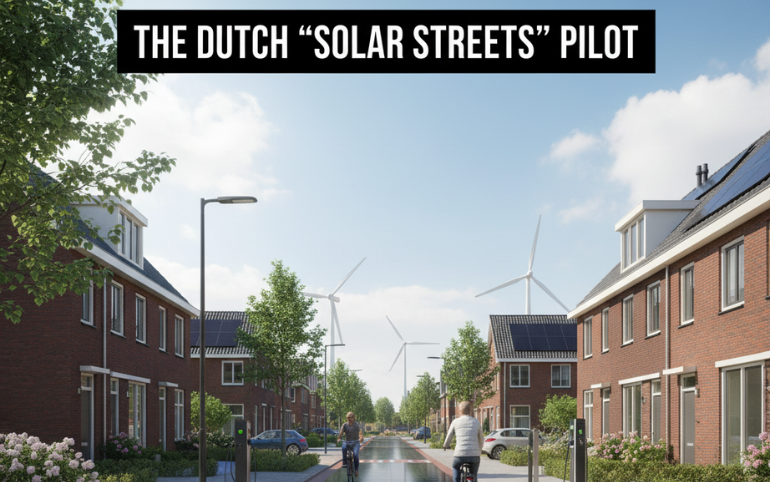
The Netherlands is reimagining public infrastructure as renewable energy hubs through the Solar Streets initiative:
- Solar Bike Paths: A 70 m cycle lane between Krommenie and Wormerveer generates 3,000 kWh annually—enough for a small household—and remains ice-free in winter.
- Collaborative Funding: A €3.5 million partnership among Noord-Holland province, TNO, Ooms Civiel, and Imtech is testing durability, skid resistance, and energy yield.
- Scalability Plans: Expansion to 350 m of solar lanes and investigation of solar noise barriers and roadway panels promise decentralized generation without new land use.
This pilot demonstrates how municipalities can leverage existing assets to deliver community-owned renewable energy and climate-resilient infrastructure.
3. Nordic Innovations: Cold-Climate PV with Heat-Pump Integration
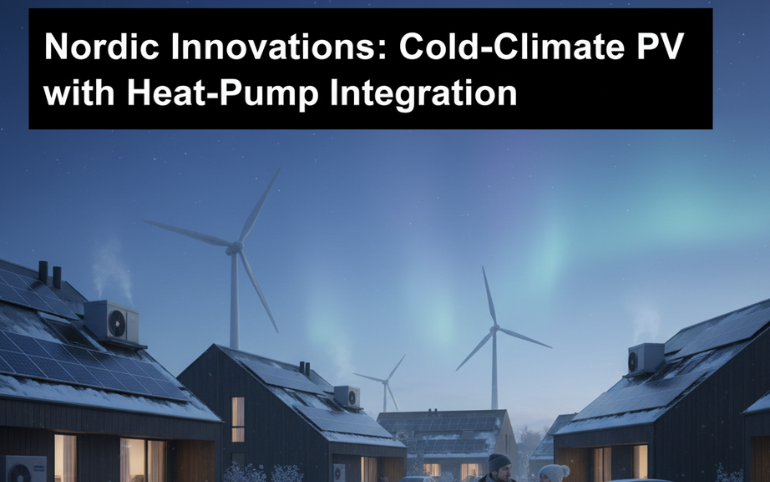
In the Nordic region, harsh winters demand robust, efficient solutions. Integrating PV with air-to-water heat pumps (AWHPs) delivers year-round performance:
- Extreme-Weather Reliability: AWHPs operate down to –25 °C using inverter compressors, advanced refrigerants, and smart defrost cycles.
- Smart Energy Management: Centralized controllers align PV production, heat-pump operation, and grid interactions to optimize cost and carbon savings in smart cities like Helsinki.
- High Seasonal Efficiency: Leading AWHP models achieve SCOP > 4.8, cutting heating emissions by up to 70% compared to electric resistance systems.
By merging power and heat generation on rooftops, Nordic innovators ensure comfortable, low-emission living even in sub-Arctic climates.
Benefits of Europe’s Green Roof Movement
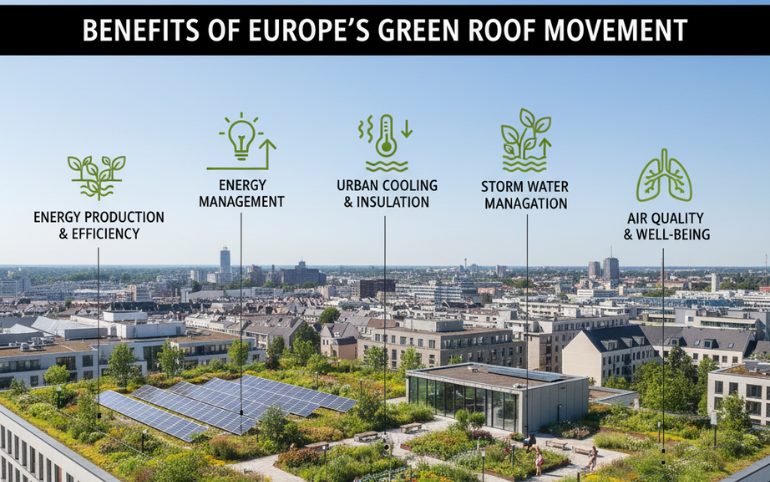
- Maximized Space Utilization: Turning rooftops and streets into solar assets preserves green spaces and land.
- Energy Independence: Decentralized generation reduces grid strain and enhances local resilience.
- Economic Gains: Stable incentives and reduced operational costs attract investment and lower payback times.
- Climate Impact: Integrated systems cut carbon emissions substantially and support Europe’s decarbonization goals.
Frequently Asked Questions
Q1: What is a feed-in tariff (FiT)?
A FiT guarantees fixed payments to renewable energy producers for electricity supplied to the grid over a set contract period, ensuring stable returns and incentivizing new installations.
Q2: How do Solar Streets enhance sustainability?
Solar Streets embed PV modules into public infrastructure—like bike lanes and noise barriers—generating renewable energy without additional land use while improving safety and climate resilience.
Q3: Can heat pumps function reliably in Arctic conditions?
Yes. Modern AWHPs use inverter-driven compressors, optimized refrigerants, and intelligent defrost cycles to maintain high efficiency down to –25 °C.
Q4: What payback period can homeowners expect in Germany?
With current FiTs and VAT exemptions, residential solar systems typically pay back in 8–10 years, followed by up to two decades of net savings and income.
Q5: Are these models applicable outside Europe?
Absolutely. The principles—stable incentives, infrastructure integration, and technology pairing—can be adapted to local regulatory landscapes and climate conditions globally.
Conclusion
Europe’s Green Roof Movement is redefining how communities harvest solar energy, blending policy ingenuity, infrastructure innovation, and advanced technology. By adopting similar feed-in tariffs, community pilots, and integrated PV-heat pump systems, regions worldwide can unlock rooftop potential, drive sustainable growth, and accelerate the transition to a resilient, carbon-neutral future.



